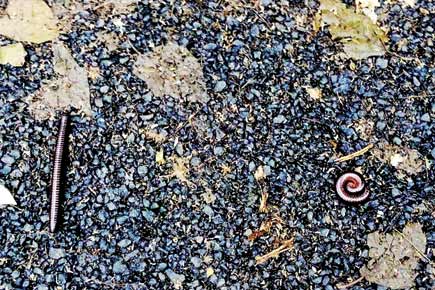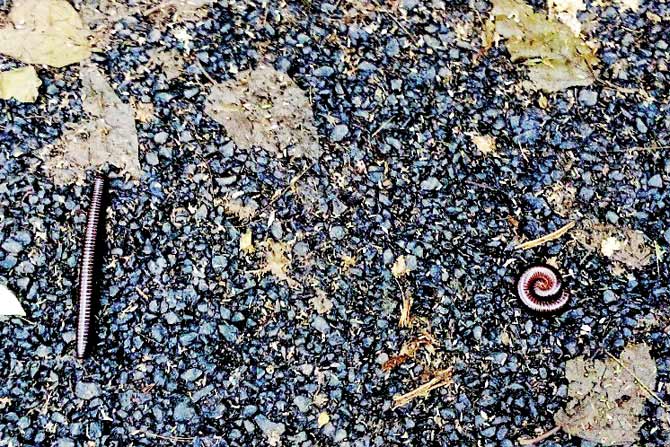Increasing concretisation of housing colonies and commercial spaces has meant a hit for local biodiversity.

 Increasing concretisation of housing colonies and commercial spaces has meant a hit for local biodiversity. Additionally, a disconnect with nature means that kids and their parents are running scared of even the most benign and harmless species.
Increasing concretisation of housing colonies and commercial spaces has meant a hit for local biodiversity. Additionally, a disconnect with nature means that kids and their parents are running scared of even the most benign and harmless species.
Most readers though, would remember how as kids we were excited at encountering a black and yellow train-like millipede, rushing about in the bathroom or garden as if on a mission. It's possible that a brave two-year-old may have even tried to lift one of them while the older ones bolted in the opposite direction. Whatever the reaction, the millipede would have most likely recoiled and scurried on its multiple legs.
ADVERTISEMENT
The name millipede translates to 'a thousand legs\, but the maximum number of legs recorded on any millipede has been 750. With the presence of two legs per segment and a minimum of 20 segments per millipede, most have over 400-600 legs. This technically qualifies them among myriapods, the arthropod group that includes centipedes, scuttigeras and other multi-legged creatures.

The shy, slow, detrivorous millipedes are very different from the aggressive, fast, carnivorous centipedes but the anatomical difference is that the latter have one pair of legs per segment, while millipedes have two.
Millipedes are one of the oldest known land animals, having colonised the planet around 428 million years ago. They probably thrived on a diet of moss and primitive vascular plants. The ones we see today in gardens largely feed on dead and decaying material, including leaves and fungus, while a few species are plant sap feeders or predatory. It is thus not surprising that many millipedes may turn up even in your fifth floor compost pit. Sadly, horticulturists consider them to be greenhouse pests, when in fact, they are actually just helping hasten the decomposition process.
The largest modern-day forms of millipedes barely reach lengths of 27-38 cm (11-15 inches). In contrast, the largest pre-historic forms were as large as 2 m (6 ft 7 inch). The tiniest of them are barely 2 mm long and can have 11 segments. Some longer ones can even have up to 100 segments. This reduction in size seen in most terrestrial arthropods is related to the increased levels of oxygen in present day atmosphere. Since size and speed are clearly not on their side, millipedes depend on curling up and chemical warfare for protection against range predators including birds, mammals, frogs, reptiles and carnivorous insects like the glowworm larvae and some dung beetles. The foul odour emitted by them through their ozopores is not just a distraction. It could contain dangerous alkaloids, hydrogen cyanide and phenols. So it's advisable that parents insist that a child wash up after touching a millipede.
Living in moist leaf litter, millipedes have laid siege across the globe, occurring from the frozen Arctic circle in Russia, Iceland and Norway down to Argentina. They are however, absent in Antarctica. In India, we have a huge variety of millipedes, largely brown to black, with a few bright orange and reddish ones. Our diversity includes the intriguing Pill millipede, which curls up into a tight ball and stays shut till a threat has disappeared.
In the urban environment, millipedes play an important role as decomposers. But our habit of burning leaves instead of composting them or using them as leaf mulch has pushed them into sub-optimal habitats such as kitchen sinks and septic tanks, where they forage for decaying material. I wonder why researchers and casual photographers have neglected this charismatic creature, which gently sashays across our driveways on its multiple legs that seem to play a Beethoven symphony.
 Subscribe today by clicking the link and stay updated with the latest news!" Click here!
Subscribe today by clicking the link and stay updated with the latest news!" Click here!







